#gaulpol
Text
My Drive Resource Libraries
Feel free to download, share, etc. I found most everything through open access journals, JSTOR, Anna's Archive, sci-hub, pdfs shared on other sns, etc.
Greek Polytheism & Hellenism
Roman & Italic Polytheism
Gaulish & Gallo-Roman Polytheism
Celtiberian Polytheism
#hellenism#helpol#cultus deorum#greek polytheism#polytheism#roman polytheism#gaulpol#gaulish polytheism#gaulish pagan#celtiberian
430 notes
·
View notes
Text
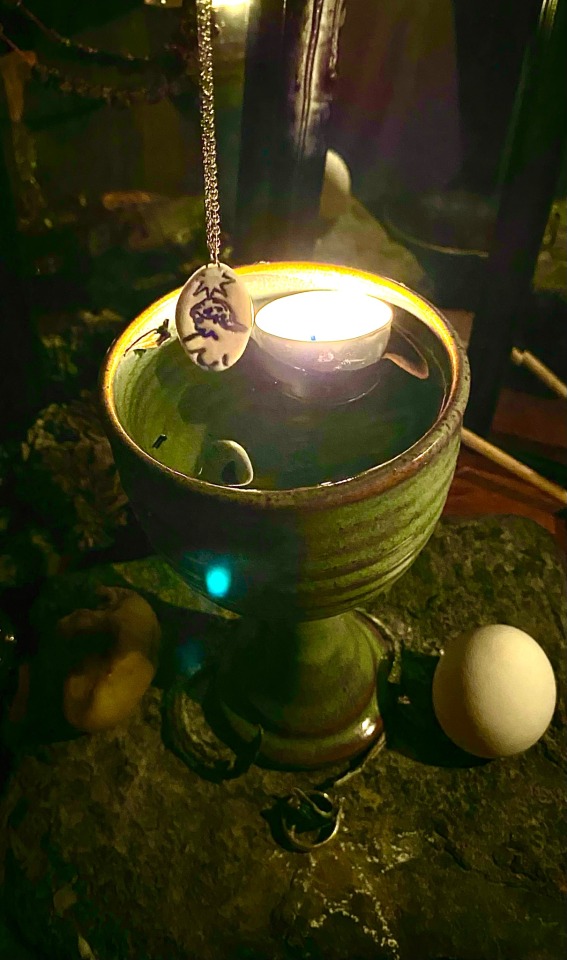
Reaching out, or rather, returning the call I suppose. I’m way out of my comfort zone, I feel silly. I’m doubting myself; though I can’t ignore this..this.. fire? Idk how to describe the pull I feel towards her- it’s like my spirit is ablaze with yearning ( cringe Ik).
Tsirona, Damona, Brixta
Stellar Queen I beseech Hail, Hail
Star, Cow, Moon, Sorceress Great, Hail
I, humble, who you have called to
I, having given praise, art, Hail
Do now call, Shinning one- hear me
To my prayer kindly incline, Hail
Threefold Queen Divine; cosmic spring
Tsirona, Damona, Brixta
This prayer was inspired by the octosyllable formula found in Gaulish curse tablets
#traditional witchcraft#magic#folk magic#tradcraft#magick#occult#witch#traditional craft#witchcraft#stellarwitchcraft#polytheism#traditional witches#traditional witch#threefold as in three worlds NOT maiden mother crone#the DreamTM is why I’m using those three names for her#Gaul#Gaulish#gaulpol#Sirona#Damona#Brixta#gaulish polytheism#theophany#theurgy#star worship#astrolatry#poetry
29 notes
·
View notes
Text
Fern's (new) introduction to the Gleaming Grove
The Gleaming Grove is the name I use for my personal pantheon. It is a mix of historical, unrecorded, and constructed deities that I have been honouring for a little over a year now. Some of these deities have been in my life for quite a bit longer, some even right from the start.
Through personal interactions with these deities I have gotten to know them beyond what is historically known. This is called UPG, or Unverified Personal Gnosis. So please, keep in mind that these are my personal interpretations of these deities. Also, as I walk this path and learn more about myself and about these deities, the pantheon might change.
Now, allow me to introduce you.
Cernunnos: Horned Hunter – historical and unrecorded Gaulish deity of the forest, of animals and the hunt. He is the leader of the Wild Hunt and the King of the Fae. He is the god of the liminal, the in between. The cycles of nature – death, decay, and life again.
Nehalennia: Wildmother – historical Dutch deity of nature, the sea, harvest. She guides travelers over sea, guiding them with her stars, or with profitable winds. She is the tempest and the storm, but also the cooling breeze on a hot day. She is the deity of agriculture, especially orchards. Her travel over the sea also includes being a psycho-pomp, guiding those who have passed to their afterlife.
Baduhenna: Rootwoman – historical Dutch deity of the forest, magic, and war. They protect the sacred places and fight against any who wishes to take it away. Protects the oppressed and gives them the tools and power to fight against their oppressors, in both weapons and magic.
Elen of the Ways: Wayfarer – historical or constructed deity of roads and pathways, of journeys both physical and spiritual. She guides us with her lit lantern when we are lost. Labyrinths are dedicated to her, especially as a way to travel inward. She protects us when we travel and nudges us in the right direction of where we need to be. An antlered deity carrying a lantern and surrounded by green.
Nemetona: Sanctuary – historical Gaulish deity of sacred spaces. Protector of boundaries. Both the sacred spaces we creating when practicing witchcraft, as the sacred spaces that are our home and our personal boundaries.
Avalon - Lady of Avalon. Goddess of healing, magic, apples, and harvest. Queen of the Fae, keeper and protector of magic.
Hearthlight – unrecorded and constructed deity of home, hearth, and community. Protects the home and hearth, provides and guards warmth and love in the home. Connections and community. Sharing what you have and taking what you need. Perhaps a mantle shared between different deities
Loki: Trickster – historical Norse deity of mischief, change, laughter. God of the outcasts, challenges societal norms and brings necessary change.
Venaris: Lady of Flowers – unrecorded deity of spring, of flowers, love, joy, mirth, and art. Beauty, music, poetry and inspiration. She invites us to dance to the tune of the seasons, to stop and smell the roses, and see the small wonders around us. Is related to Eostre/Ostra and Meda
Liyesa: The Iridescent One – historical and constructed deity of beauty, self love and -acceptance, freedom. She teaches us there is beauty in all of us, and helps us learn to love and accept ourselves as we are. Breaker of Chains, she guides us to break free of the chains society and our own perfectionism throw around us. She grants us second chances should we need them.
Holle: the Veiled Silence – constructed and historical Dutch deity of silence, of winter and of secrets. She is the silence of snowfall. She urges us into contemplation and introspection, and what secrets mean and how to keep them.
Arawn - historical Welsh deity of the Underworld, the wild hunt, loyalty, and honour. King of the Fae and Lord of the Dead. Also called Gwyn.
Ashka: Ashkeeper – unrecorded deity of the dead, graveyards, and memories. Gathers and keeps the memories we have of those who have passed. Keeps the ‘souls’ safe until they are ready to continue to wherever they choose their afterlife to be.
the Morrigan: Crowmother – historical Irish deity of war, magic, and sovereignty. She is connected to Baduhenna both through historical sources and my own interaction with both.
Mona: Moonmother – historical deity of the Moon, magic, the night. Bringer of change and moving through cycles. Mother/sister to Starsister. Void created the stars, Herta (the Earth) and the moon. We gave them life in the form of divinity. Moon came first, and she inspired humans to give her a sister/daughter.
Stēra: Stardancer – unrecorded deity of the stars and the night sky, of navigation and of hope. A light in the dark, a guide to lead us home. She dances across the sky, leaving a trail of stars behind.
Herta/Arda: Greenmother – historical Dutch deity of the Earth, nature, growth, and harvest. Her day was called “Hartjesdag” or “Heart’s Day” and was a day for collecting magical herbs to bless the home.
Gahella: Void/Creation – The emptiness from which anything can be created (chaos in Latin) The depth of space. The Divine Chaosyne. Void is the emptiness that was here before the big bang. The void from which creation springs forth. They are the darkness between the stars that birth the galaxies and starfields. Chaos is needed to keep things from getting stagnant, and is the catalyst for change.
Werda: Wordweaver – unrecorded deity of words, stories, magic. Muse of writing. They spark the inspirational spark and guide the words on paper. They are the keepers of knowledge, both mundane and magical.
Lycke: Lotweaver – unrecorded deity of fate, luck, and the tapestry of life. They weave the threads of life, guide and watch over them. Fate is not set in stone, choices and such will always have an influence on the tapestry.
Klaithe: Craftweaver – unrecorded deity of creativity, artistry, and artisans. The joy of creation for the sake of creation. The inspirational spark that is within all of us. The need to express our true selves in our own ways.
Spirits honoured in my practice: the Good Neighbours, Alven, Merfolk, Dragon, Unicorn. My ancestors of blood and bone, land, heart, spirit, and craft. The spirit of Wolf and Crow.
[Updated March 9 2024]
#deity#personal pantheon#gleaming grove#unrecorded gods#constructed pantheon#constructed gods#gaulpol#dutch mythology#dutch deities#long post
25 notes
·
View notes
Text
— A little prayer to Rhiannon and Epona 📜
🌞 🌿 TO RHIANNON
Bright Rhiannon
Full of grace
Maiden of otherworld
Shining in the light of Bealtaine
The power is within
Be with us now and always
Blessed be
🏛️ 🪙 TO EPONA
Hail Epona
Noble and bright
Shining in the light of Winter
Holy mother
Queen of horses
The power is within
Be with us now and always
Blessed be


#pagan prayer#devotional prayer#rhiannon#epona#rhiannon devotee#epona devotee#gaulish polytheism#celtic polytheism#welsh polytheism#welsh paganism#celtic paganism#gaulish paganism#paganblr#pagan tumblr#gaulpol#polytheism#paganism#celtic pagan
15 notes
·
View notes
Text
Wrote some cool stuff about Andraste
#north sea poet#andraste#not dragon age#brittonic#brittonic polytheism#BritPol#GaulPol#gaulish polytheism
8 notes
·
View notes
Text
@bruxtia mentioned a statue found of a (perhaps) female version of Cernunnos. Which reminded me that I actually wrote a piece about that in 2020 but never shared here.
Cernuna?
I got a question on Twitter by a follower who wondered if I have any information about the Goddess Cernuna. I must admit, I’d read the name once in passing, while reading about Cernunnos, but I never really dove further into it, thinking that it was simply a modern pagan’s wishful thinking. After the question, however, I got curious. Is there a female counterpart to Cernunnos? Do we have evidence of a Gaulish female antlered Goddess?
Short answer: sort of.
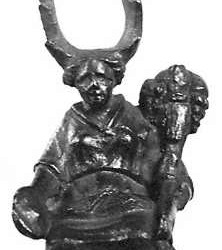
Above is a bronze statue of an antlered woman, sitting crosslegged, holding a cornucopia and a patera: a gallo-roman offering dish. The statue is currently in the British Museum, but was found at Broye in the Haute-Saône (Franche-Comté). Interesting is of course that she had antlers, and the fact that she is sitting cross-legged, something that most Cernunnos depictions have as well.

Another antlered goddess, sitting cross-legged, holding a cornucopia was discovered in Puy-de-Dôme. Her other hand is empty but was likely holding another patera. She can be seen in the Musée de Clermont-Ferrand.
The cornucopia is a symbol of abundance and prosperity. The patera is one of worship, of leaving offerings for a deity. However, often the figures holding the patera would not be the deity themself, but those who would bring offerings to them. So are we looking at statues of Goddesses, or of priestesses? Horns (or antlers) indicate a link to nature and the hunt. Which would make these potential Goddesses a Goddess of nature, the hunt, and abundance (and perhaps the harvest).
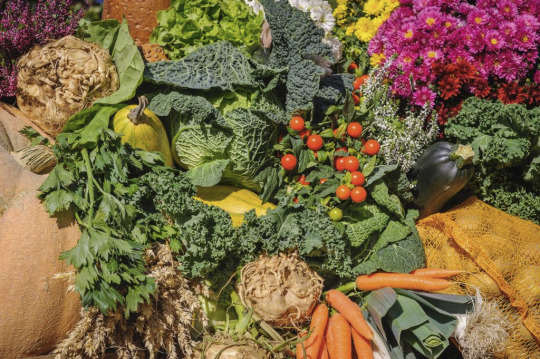
Photo by Alexander Schimmeck on Unsplash
There is also mention of a relief of a horned (not antlered) Goddess found on a piece of pottery in Richborough, Kent, but I wasn’t able to find an image of this.
Of course we know next to nothing about these figures. Their name, or what their attributes entailed. Cernuna or Cernunna would be a suitable name, meaning “horned” but whether or not She would have a link to Cernunnos is impossible to know. And if She did have a link to Cernunnos, what would it be? Is She His consort, His wife, His sister, His female form? An interesting concept to think about.
Sources:
We Are Star Stuff – Cernunnos
We Are Star Stuff – Horned Goddesses
DeoMercurio – Cernunnos
Noémie Beck – Goddesses in Celtic Religion
Ceisiwr Serith – Cernunnos: Looking a Different Way
Sharon Paice MacLeod – Celtic Cosmology and the Otherworld: Mythic Origins, Sovereignty and Liminality pg. 152-154
Miranda Green – Symbol and Image in Celtic Religious Art pg. 26-27
Miranda Green – Animals in Celtic Life and Myth pg. 237
Georgia Irby-Massie – Military Religion in Roman Britain pg. 100
50 notes
·
View notes
Text
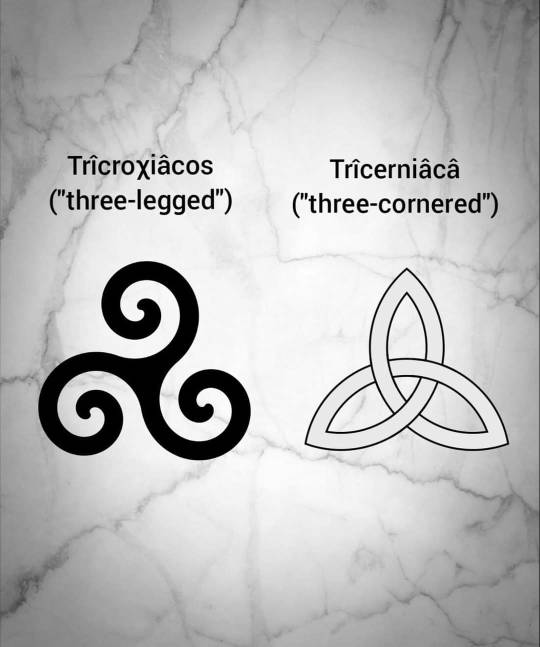
Some words I thought needed to be made (based on their Greek and Latin names, respectively: triskelion and triquetra).
trî- = three
croχos/crocos = leg, foot
cernâ = corner, angle
#gaulish#gaulish language#gaulish polytheism#gaulpol#celtic polytheism#celtic paganism#celtic#triskel#triskelion
41 notes
·
View notes
Text
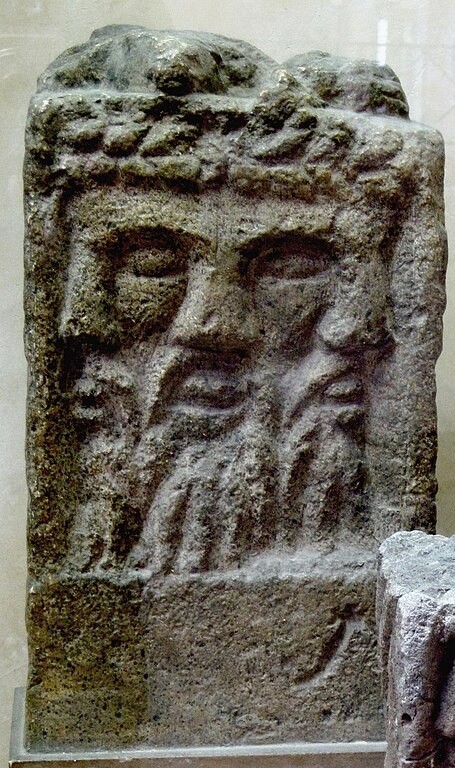
Hermes omnia solus et ter unus.
(Hermes, alone is all and three in one.)
— M. Valerii Martialis, Epigrammaton libri V, XXIV
#polytheism#paganism#pagan#gaulish polytheism#gaulpol#helpol#hellenic polytheism#roman polytheism#hermes#mercury#gaulish mercury#tricephalos#triune god#lugus#lugoves
3 notes
·
View notes
Link
Heard of Gaulchat? It’s our Discord server where you’ll find:
✅ An active and welcoming community
✅Knowledgeable individuals who can answer any question on Gaulish Polytheism
✅TG’s lessons on Gaulpol
✅Regional chats to network with Gaulpols in your area!
Join today!
22 notes
·
View notes
Text
Digital Altar: Cernunnos
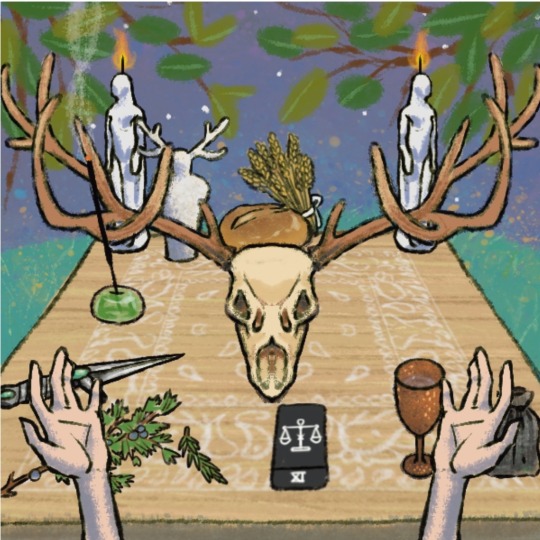
Gaulish God of liminality, death, mediation, balance, wealth, the hunt, and the wild & tamed.
#deities#pagan#polytheism#polytheist#deity#paganism#gaulish polytheism#altar#digital altar#E-shrine#cernunnos#the horned god#the horned one#karnonos#Gaulish Deities#Gallic Gods#mythology#gaulpol#occult#occultism#piccrew#devotional#offerings#godspouses#godspouse#godpartner#godspousing#godconsort#broom closet#celtic polytheism
92 notes
·
View notes
Text
It's weird starting to read more about the Celtic side of things* and trying to reconcile that with the Germanic things. Mostly folklore about the daoin sí and álfar and their relationships with humans. Also it seems like people have a different take on the gods and how they interact with this world compared to Germanic archeology and folklore. Does anyone have advice or resources? Or even UPG to share? I'm reading a lot but I'm always eager to learn more.
*Irish, Scottish, Welsh, and Gaulish. I couldn't decide where to start so I just sort of went all things Celtic with easily accessible resources
6 notes
·
View notes
Text

The Celtic goddess Sequana in her duck-boat.
Bronze, Gallo-Roman era, Archaeological Museum of Dijon
#cultus deorum#celtic#celtpol#gaulpol#gallo-roman#archaeology#roman archaeology#celtic art#sequana#polytheism#gaulish polytheism#gaul#oh she comin#the duck is holding a ball in its mouth#also the boat is LITERALLY a duck#it doesnt get better than this my friends
109 notes
·
View notes
Text
Revised prayer to Ðirona
Starkindler, bubbling font! Hail!
Asteriá, moon! Hail, Hail
Glimmering Lady, I beseech
I, humbly, whom You have called to
I, having given art, praise
Do now call, Shinning One
Hear me, threefold Queen
Cosmic spring
Above and below
The waters of the Sky black mirror
Dumnos, Albios
Unbecoming, remaking, becoming
Adder and egg
Regina Caeli, Fontis Stella
Ueronados and Anderandos
Giamos and Samos
Both are mirrored in you
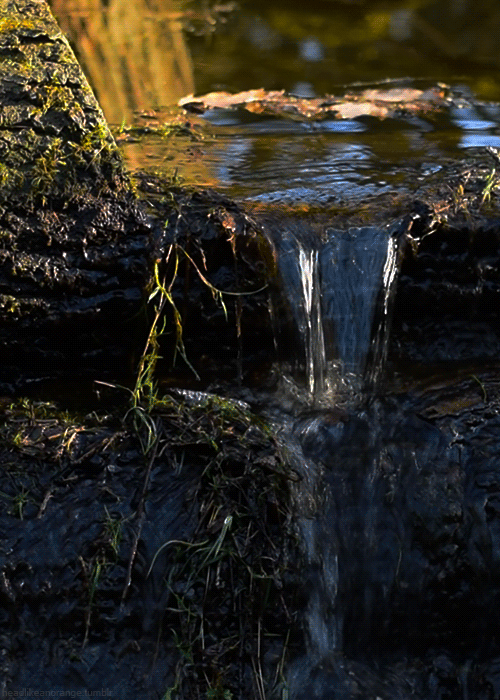
Praise unceasing unto the Queen
Within you the mysteries found
As stars to your brow are bound
10 notes
·
View notes
Text
I have decided that I want some short prayers or poems to recite to my deities and spirits. So I made a list for October to do one prayer/poem a day! As a sort of "inktober" in the writing sense instead of the drawing sense.
As always feel free to join me. I will be posting them in groups of a week as to not overwhelm your dash, lol.
13 notes
·
View notes
Text

The Wild Hermit, Ink on Canvas
10 notes
·
View notes
Text
Thunder-fertility-protection-death god with a hammer that isn't Thor?! Count me in!
#north sea poet#brittonic polytheism#britpol#gaulish polytheism#gaulpol#brittonic gods#gaulish gods#Sucelus#Sucellus#druidry
7 notes
·
View notes